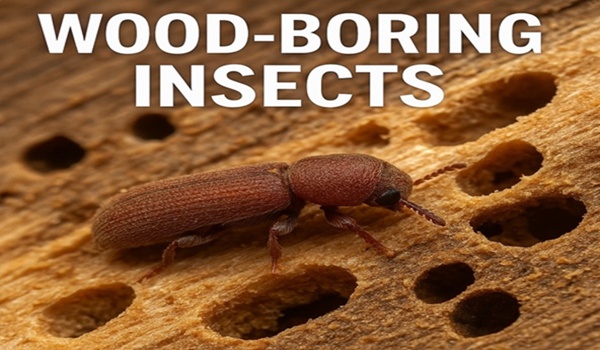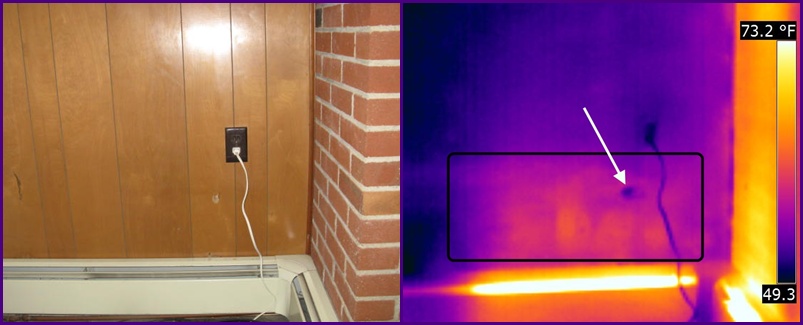Wood Boring Insects
See What's Really Going On!

One key benefit of thermal imaging in Massachusetts is its ability to detect wood-boring insect infestations. It plays a crucial role in identifying hidden damage caused by termites or carpenter ants much earlier, potentially saving you from costly repairs. These pests can form colonies that, if left undetected, may lead to severe structural damage. A small termite colony, for instance, can cause significant destruction to a building in as little as six weeks. Regular monitoring and early detection are essential in preventing these infestations from becoming a major problem.
In the past, I’ve successfully identified concealed wood-boring insect damage in homes, but certain conditions must be met for thermal imaging to be effective. When termites or carpenter ants and powder post beetles invade buildings, they alter the normal heat patterns of hidden structural components, such as walls and floors, due to the damage or hollowing out of the wood. These affected wood members emit slightly different temperatures compared to intact ones. This subtle temperature difference is easily detectable and visible to a trained eye using a thermal imaging camera.
| IMPORTANT: For thermal imaging to effectively detect concealed termite damage within your structure, the wall being examined must be above ground level and exposed to the exterior weather. (Basement walls cannot be thermally scanned, as they are below ground level.) Additionally, the wall must have a cavity that allows for a temperature differential on the opposite side of the wall being scanned. See the image below for clarification... |

My thermal imaging camera detects changes in heat patterns, pinpointing the exact location of a wood-boring insect infestation (see images below). In the thermal image, hot spots appear as red or yellow, while cold spots are shown in blue or purple. When properly interpreted, these heat patterns can reveal hidden insect activity. This infrared technology enables early detection of termite infestations, allowing for prompt eradication before significant damage occurs—potentially saving homeowners thousands of dollars in future repairs.

Visually, this wall appears flawless, but infrared imaging reveals hidden termite activity.

Existing homeowners can also benefit from my thermal imaging services to ensure they aren’t overcharged by exterminators who may misidentify or exaggerate termite or carpenter ant infestations. In some cases, concealed wood-boring insect damage may be minor, but an exterminator might suggest otherwise or rely on guesswork. Infrared imaging provides an accurate assessment, verifying the true extent of the damage.
You may be wondering, “How can a camera detect concealed termite colonies?” Let’s take termites as an example. When they invade a building, they disrupt the normal heat patterns of floors and walls. While termites are cold-blooded, their metabolic activity generates heat. Additionally, they regulate their thermal environment by constructing moist mud tunnels, which appear as cool spots within wall cavities. These temperature variations, along with any structural damage, are clearly visible during a thermal scan.
Thermal imaging offers an environmentally friendly, low-chemical, and radiation-free approach to termite detection. By pinpointing the exact location of an infestation, I can determine the most effective areas for targeted fumigation, reducing unnecessary chemical use and protecting both the homeowner and the environment. After treatment, thermal imaging can be used again to assess the success of eradication efforts, ensuring that termite infestations become nothing more than a distant memory.
My inspection results will be captured and then documented into a professional report, providing you with tangible proof of all my wood boring insect findings.

A visual inspection of this wall looks great, but after thermally scanning this area, infrared detected several anomalies (inside black border). Upon a closer examination, I rubbed the paneling and my finger poked right through it (white arrow). This revealed concealed Termite activity throughout the paneling and wall structure.

For more information, please go to the top right corner and click "Navigate."